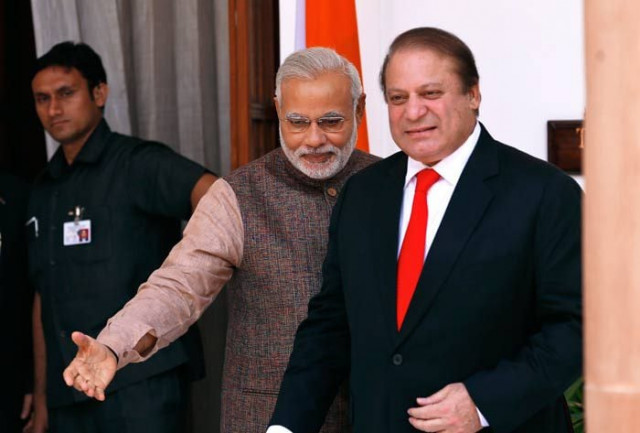Accepted and rejected
The PML-N government in Islamabad has been consistent from the outset in its desire to reach out to India

Indian Prime Minister Narendar Modi with Prime Minister Nawaz Sharif. PHOTO: AFP
The US State Department would very much like to see a resolution to the long-standing conflict, in large part because the geopolitical changes taking place in the region find it a considerable impediment to development at virtually every level. Ambassador Haley has hinted at Trump administration’s participation in talks aimed at resolution — and India, as expected, immediately rejected the offer. The Haley statement in its closure makes it clear that the Americans did not really expect to get very far and that a resolution had to be bilateral rather than tri- or multilateral.
The PML-N government in Islamabad has been consistent from the outset in its desire to reach out to India, but to little avail. The Americans can do no more than ‘encourage’ India and Pakistan to engage in direct talks, but given the intractable position of India — a position that has hardened markedly under the premiership of Narendra Modi — ‘encouragement’ is likely to fall on deaf ears. The Indians have rejected any suggestion of third-party mediation which has in the past included the UN as well as the USA. There is no investment in peace and a position of managed instability suits India well, a not-quite war that eats resources for both countries but disproportionately more so for Pakistan than India. Whether that position is sustainable with Russia and China now engaged and with considerable vested interests in both India and Pakistan, is a moot point. By itself America is going nowhere as a broker, it will be the Chinese and the Russians that do the behind-the-arras arm-twisting in the future.
Published in The Express Tribune, April 6th, 2017.
Like Opinion & Editorial on Facebook, follow @ETOpEd on Twitter to receive all updates on all our daily pieces.















COMMENTS
Comments are moderated and generally will be posted if they are on-topic and not abusive.
For more information, please see our Comments FAQ